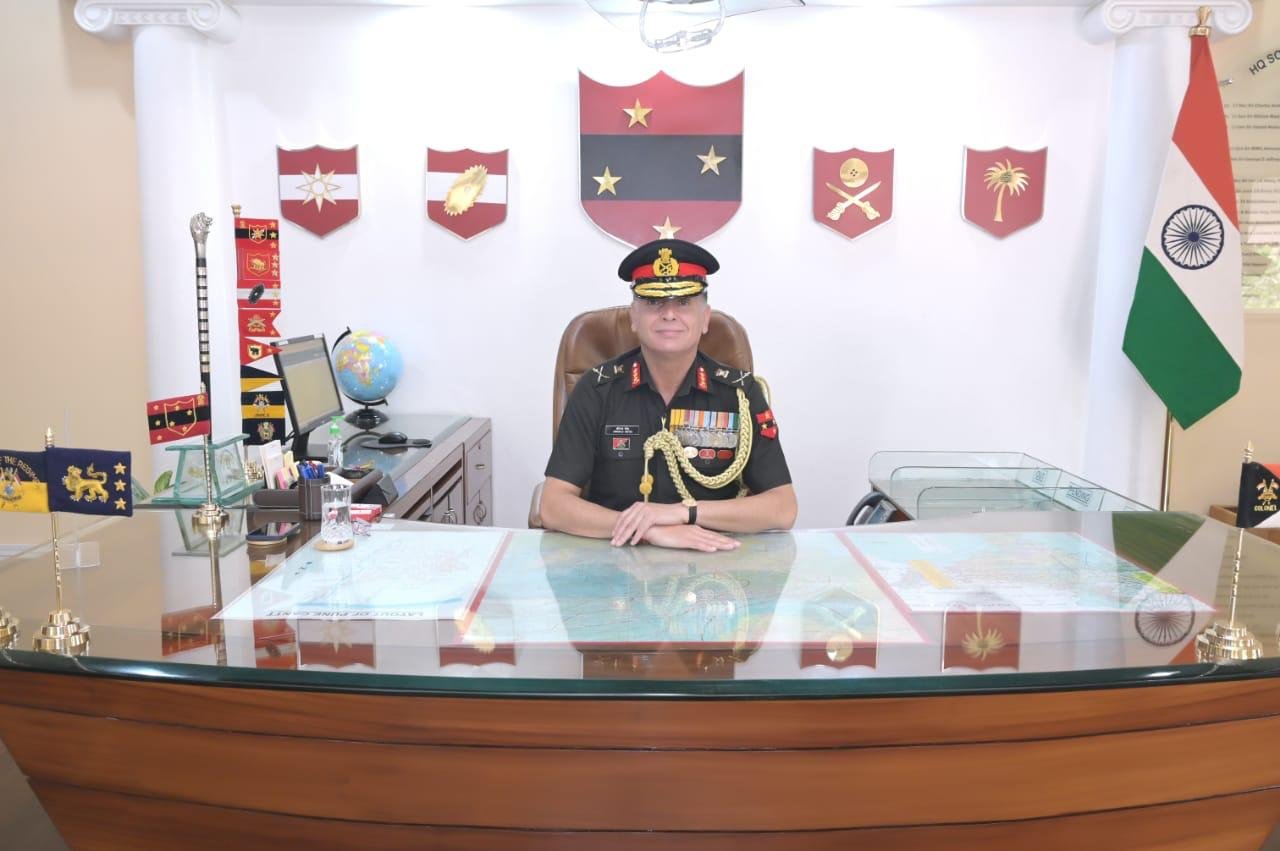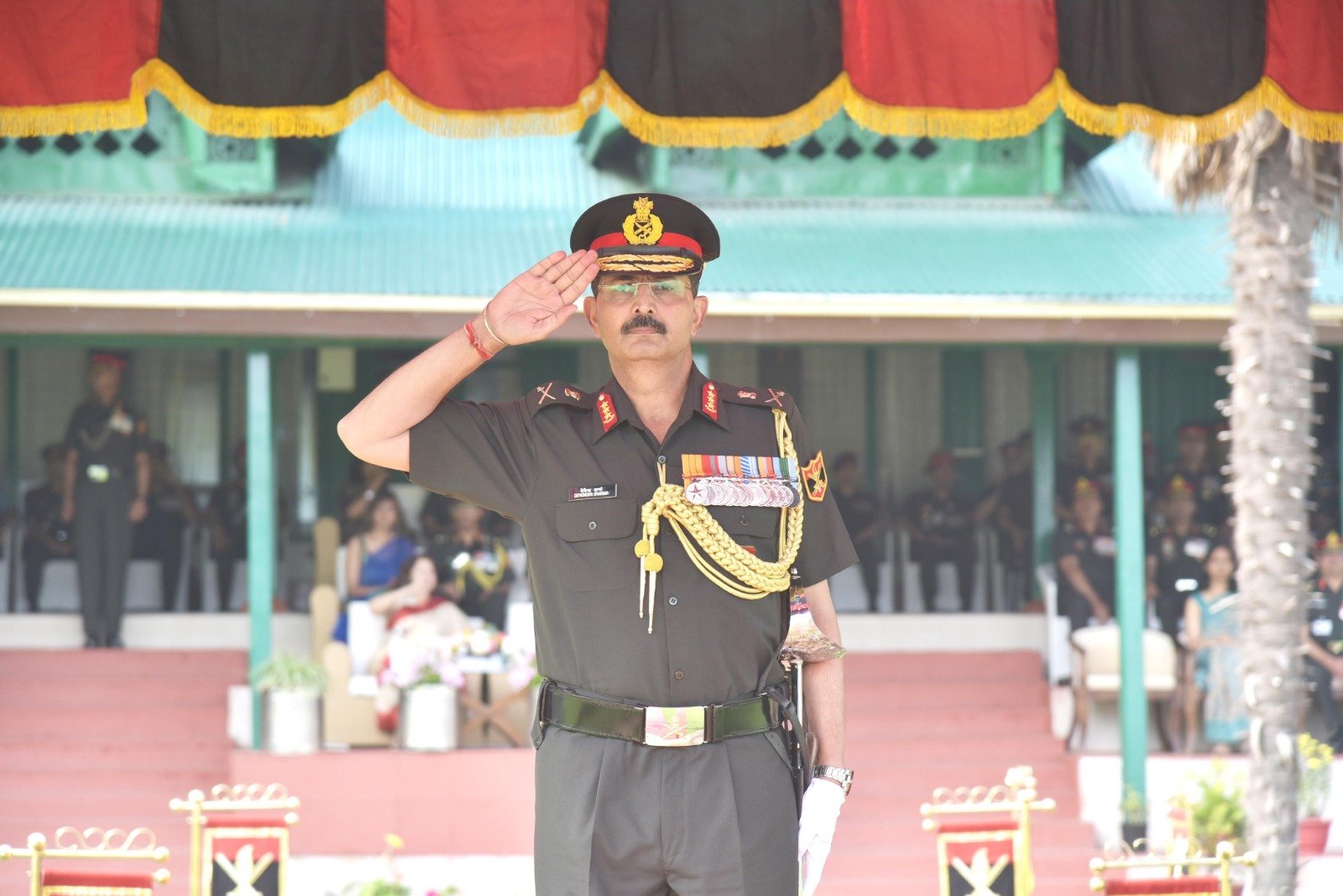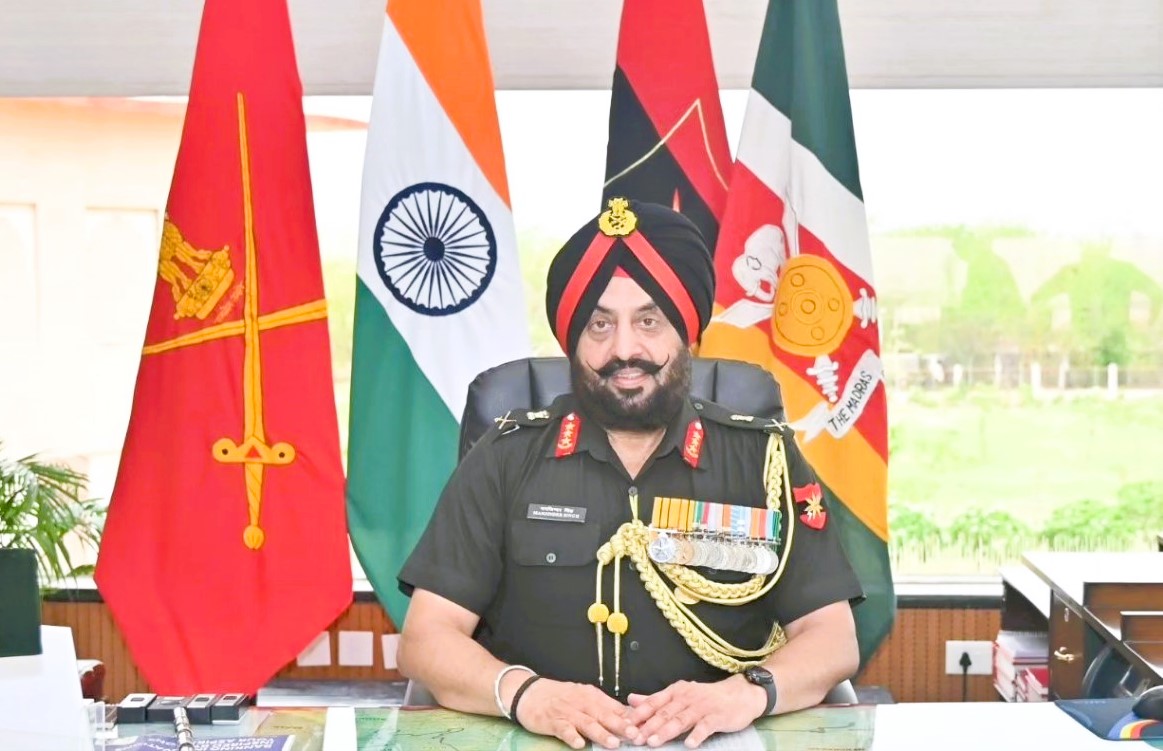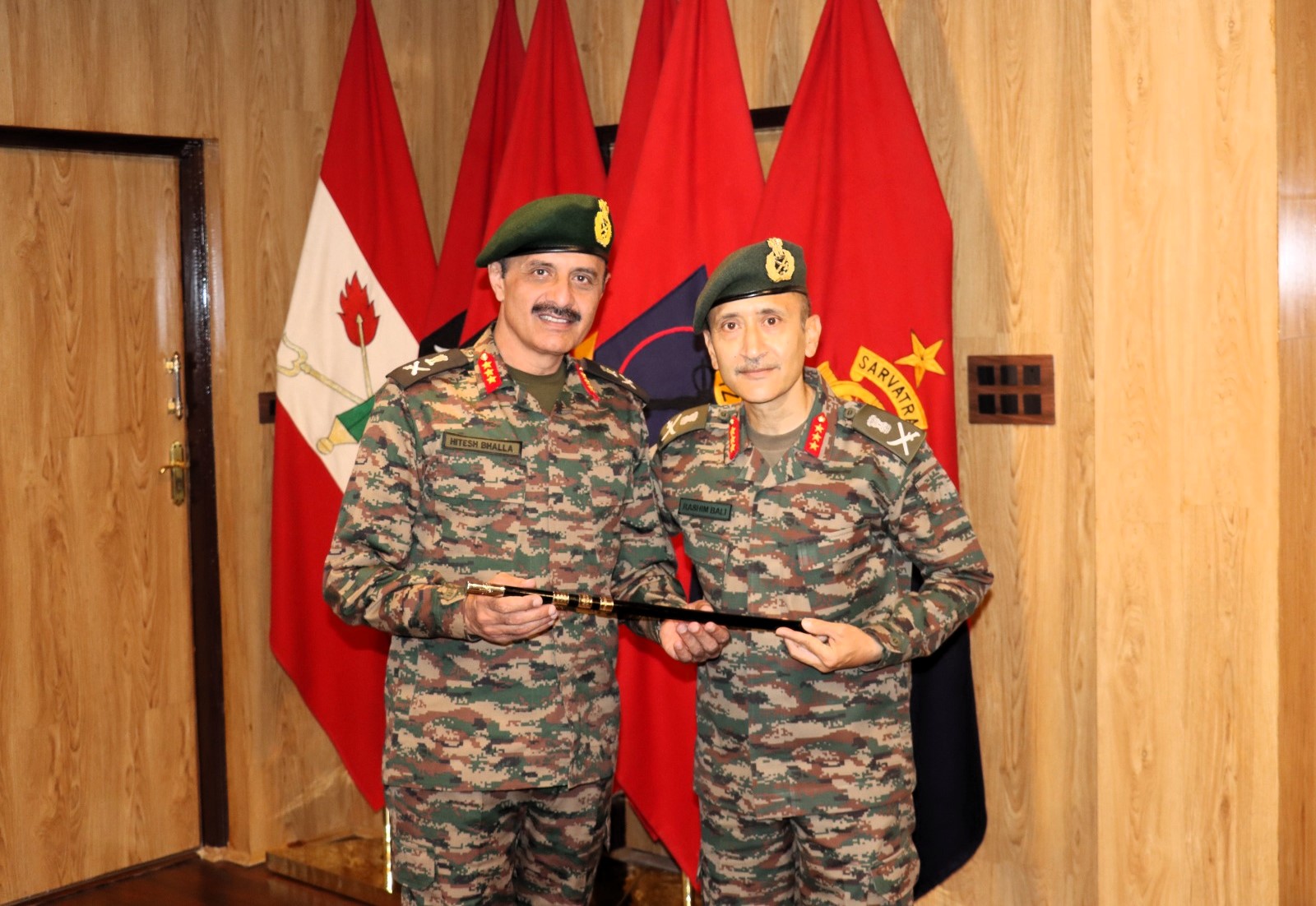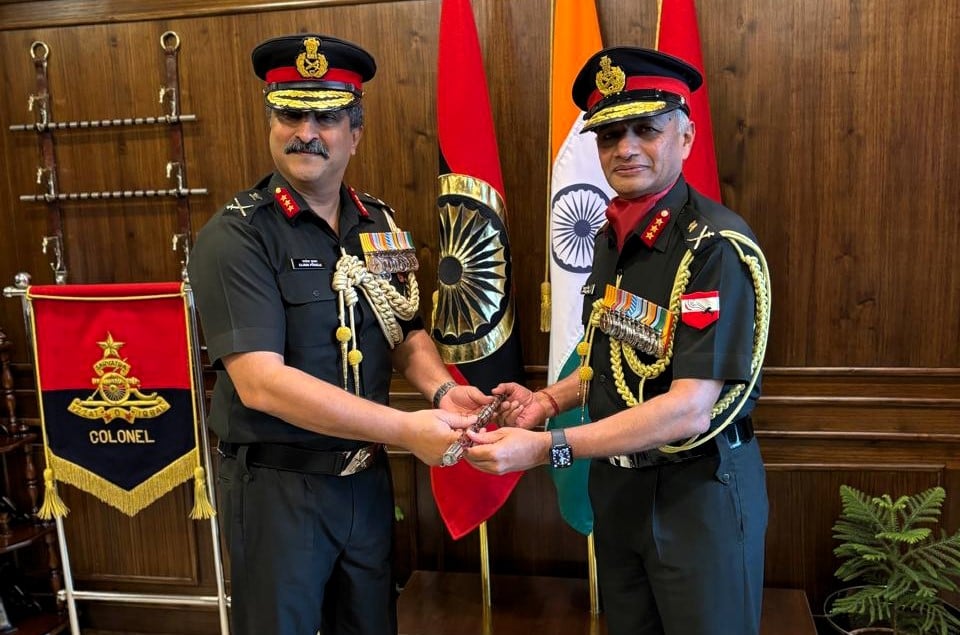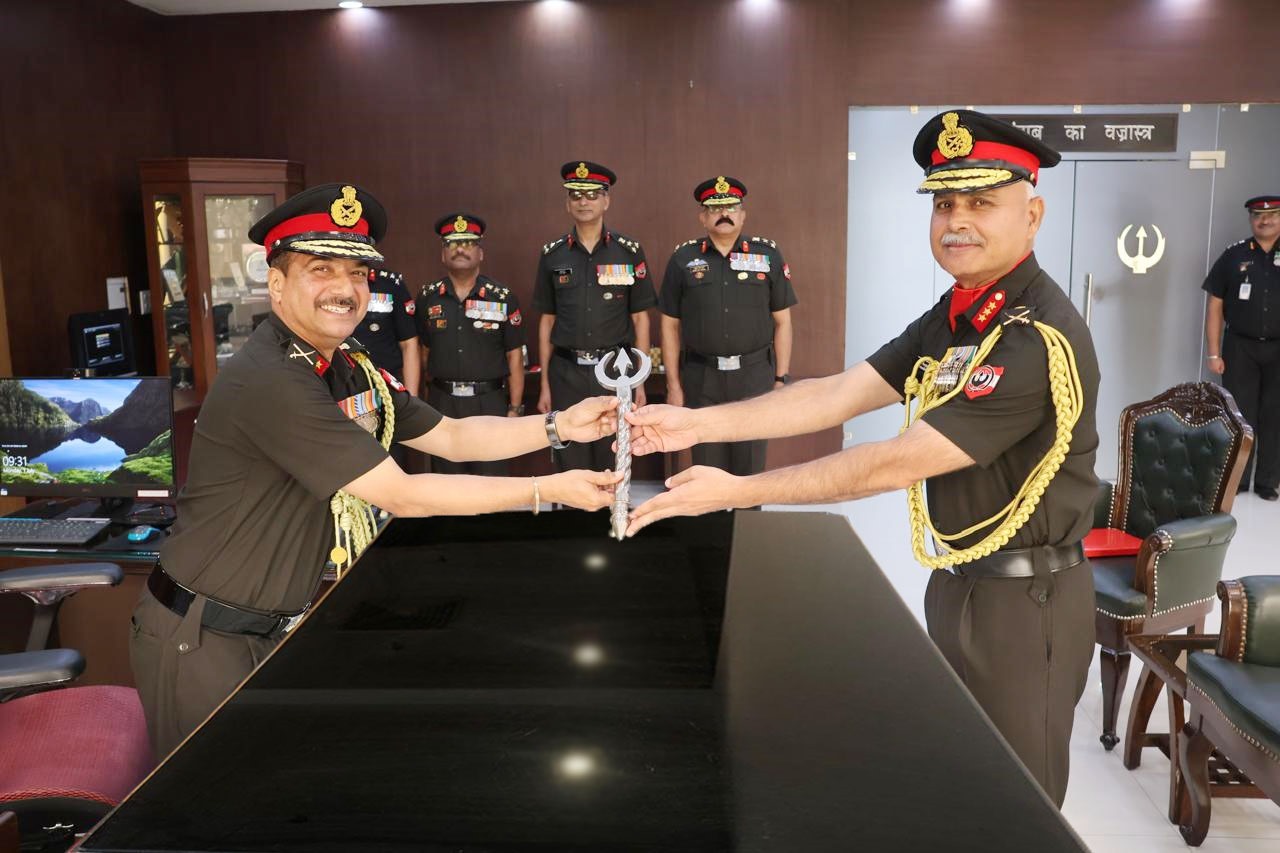Lieutenant General Dhiraj Seth Assumes Command of Southern Command
Lieutenant General Dhiraj Seth, AVSM, has officially taken charge of the Southern Command of the Indian Army. The change of…
Lieutenant General Devendra Sharma Takes Helm at Army Training Command
Lieutenant General Devendra Sharma, AVSM, SM, has taken command of the Army Training Command (ARTRAC), marking a significant leadership transition…
Lieutenant General Manjinder Singh Takes Command of Sapta Shakti Command
In a distinguished ceremony held at the Jaipur Military Station, Lieutenant General Manjinder Singh, AVSM, YSM, VSM, officially assumed command…
Lt Gen Hitesh Bhalla Assumes Leadership of the Fire & Fury Corps
In a significant military leadership transition, Lt Gen Hitesh Bhalla has taken command of the esteemed Fire & Fury Corps,…
Lt Gen Rajesh Pushkar Takes Command of Kharga Corps, Pledges Continued Excellence
In a formal ceremony at the corps headquarters in Ambala, Lt Gen Rajesh Pushkar has assumed command of the Kharga…
Lt Gen Ajay Chandpuria Assumes Command of Vajra Corps
In a significant leadership transition within the Indian Army, Lt Gen Ajay Chandpuria has officially taken over as the commander…

